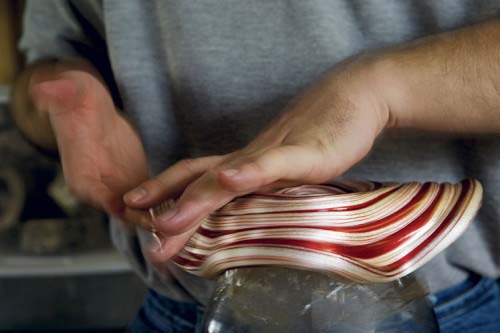From a household name to a forgotten self, Ali Bhat is one of those characters of Valley whose show ended with the prelude of gun in Kashmir. Bilal Handoo meets the forgotten candy man who slid from centre-stage to abyss of nonentity.

Ali Mohammad Bhat, 69, walks carelessly on the streets of Srinagar’s old city these days. With parched face and partial reminiscence of past, this frail-figured elder remains absorbed in his own world. Often donned in shabby outfit, he remains nonentity for most passersby. But those who know this ‘celebrated’ candy maker from downtown Srinagar are overtaken by nostalgia by his mention.
Ali Bhat, as locals call him, is not an ordinary elder. The streets, where he is nobody now, used to witness ‘fervent’ rush for his candies only twenty-four years ago.
The story of Bhat has its setting in pre-militancy period in Kashmir. In old city, children were eager for Bhat’s candies. Kids of that time wouldn’t be fed on chocolates and biscuits. By ringing bronze-bell in his hand, Bhat would announce his arrival early morning in the locality. A round stick rested on his shoulder would carry a colourful paste of candy making on its top.
In no time, he would be encircled by kids eager for his candies. They would rather plead him to give them candies with different forms and shapes. Bhat would hand over candies to them in exchange of coins in the form of parrot, watch, hubble-bubble (Hookah) and many other forms.
“He would make candies of any pattern, which used to fascinate kids,” Mohsin Mirza, 37, a resident of Naid Kadal, recalls. “Besides, such was the craze for his candies that not even kids, but grown up were equally eager to taste them. He was known to all, but as guns started blazing around in 1989, he suddenly became invisible.”
Invisible from public scene over two decades now, Bhat dwells in a modest house in Khanyar area these days. He is sharing that house with his aged wife and smalltime coppersmith son. The other member of his family, his daughter has been married since many years now.
“The situation forced me to quit candy making,” Bhat says, while showering his ‘sweet’ toothless smile. “Besides frequent curbs in place, the migration of pandits from Kashmir also left me with no other option than to shun ties with candies.”
For making paste for candies, one of important ingredients he would require was Jowhar, a white coloured substance. The substance was mostly sold by pandit grocers in city. “As they [pandits] left, I couldn’t get it anywhere and therefore, had to call off the candy making,” Bhat says.
To make candies, every evening he would mix Jowhar in milk and heat it till paste would be formed. He would then add natural colours to paste to make it attractive and hung the paste on the top of stick throughout the night. In the morning, he would wrap the paste with cover and then step on streets.

“His candies would taste so good,” Abdul Rashid, Bhat’s close neighbour remembers. “Certainly, like each one of us, situation in Kashmir also played spoilsport in his case. The only difference remains that while most of us recoiled back to certain extend in our lives, Bhat couldn’t recover from the impact and had to give in.”
With no work left, Bhat soon started to lift stones with the same hands that used to make candies of different designs. And slowly, he was pushed into forgetfulness. Bhat was the only man in his locality who was making such candies. It is said that he was master in his trade akin to Amme Bedda, renowned ice-cream maker of Bohri Kadal. “Both of them were experts in their own ways and were immensely popular,” Mushtaq Bakaal, a local in downtown says.
The art of candy making was passed to Bhat by a local in Batamaloo. Once he called Bhat and told him, ‘Let me teach something which will become a source of sustenance for you.’ Bhat then a young man shown an equal keenness and learnt the skill.
“May god shower heavenly bounties on that policeman of Batamaloo, who taught me the skill of candy making,” Bhat says. “He had himself learnt it from outside the Kashmir.”
Bhat wasn’t alone who learnt the skill of candy making, there were few others. While Bhat remains the only surviving candy maker, rest hadn’t either put it in practice or have passed away long back.
With stooped back and age on his side, he doesn’t go to work anymore. He now earns his livelihood by being the part of auctioneering of abandoned stuff, where he assists people in gathering the material.
“How I wish to step again on streets,” Bhat says, “but age and unavailability of ingredient of candy making is not materializing it.”















